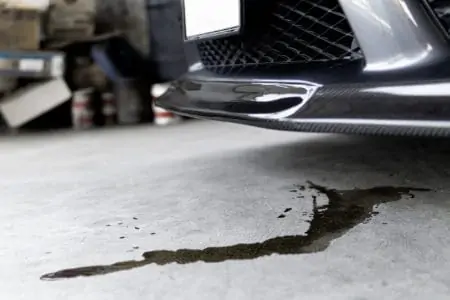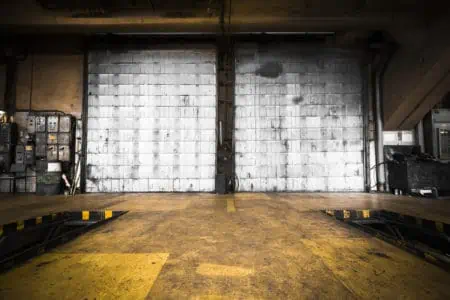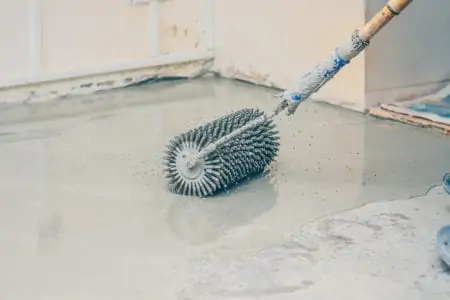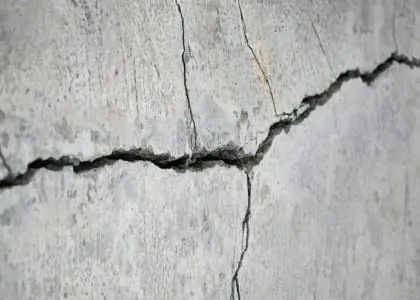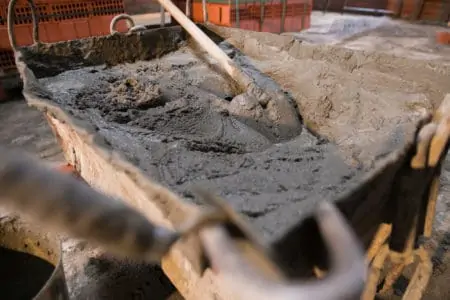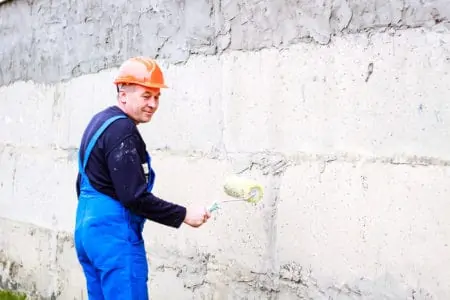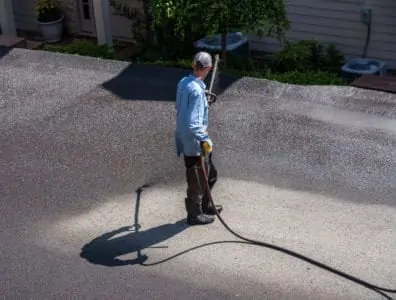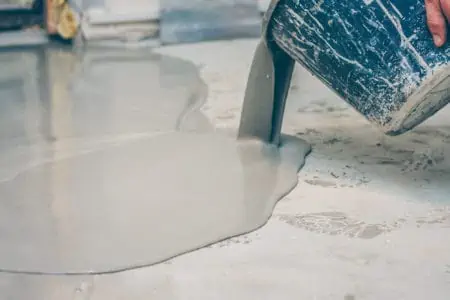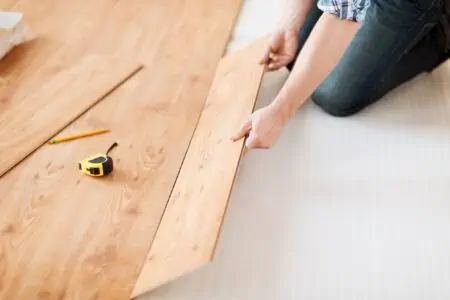Oil Stains on your concrete floor are common, especially your garage floor and driveway. You need to get them removed because when you seal the floor, the oil penetrates the sealer and shows through.
We show you how to remove oil stains from concrete floors to keep them in tip-top condition.
Key Takeaways
- Remove fresh oil stains using kitty litter or sawdust to absorb excess oil, then scrub with baking soda or powdered laundry detergent and water, followed by washing the floor with dish soap and water.
- For old oil stains, use a concrete cleaner or degreaser, a poultice made of sawdust and solvent, or microorganisms that consume oil and produce water and carbon dioxide as a byproduct.
- Light oil stains can be removed using Coca-Cola, which contains phosphoric acid, citric acid, and carbonated water, or bleach with a scrubbing brush for fresh stains.
- Prevent oil stains on concrete by sealing the concrete with a robust concrete sealer, using old carpet or a stain-blocking paint, or wiping up stains immediately with absorbent materials like sawdust or kitty litter.
How To Remove Fresh Oil Stains From Concrete Floors
Some concrete oil stains are just small spots, while others can be severe stains that take a lot more effort to remove. The intensity of the stain dictates the method of removal.
Here’s how you should remove fresh oil stains.
1. Soak Up Excess Oil
Grab some kitty litter or sawdust and sprinkle it on the stain to soak up the excess oil. You can also use a dry rag.
2. Scrub the Stain
Once the excess oil is up, grab some baking soda or powdered laundry detergent and sprinkle it on the floor, adding a small amount of water to make a thick paste. Using a hand-held scrubbing brush, work the paste into the concrete to lift the stain.
When you are satisfied the stain has dissolved, rinse it with clean water.
3. Wash the Floor
Mix up some dish soap and water and, using the scrubbing brush, attack the last remnants of the stain and rinse the concrete clean. Allow the floor to dry.
How To Remove Oil Stains From Concrete Floors
Removing older oil stains takes a bit more ingenuity and patience, but it can be done with the right techniques.
Concrete Cleaner or Degreaser
Concrete cleaner is a more aggressive way of attacking that stubborn oil stain. Oil can quickly soak into the floor because concrete is porous. Once this happens, it can be tricky to shift.
1. Clean the Floor
Remove any loose dirt and debris from the surface of the concrete. You can use a push broom and a vacuum cleaner to get every last speck of dust.
2. Use the Degreaser
Spray the concrete cleaner or degreaser onto the stain and let it sit for 5 to 10 minutes, or until it has entirely soaked into the stained area.
3. Wipe Clean
Grab an old rag and wipe the degreaser from the surface of the stain. You can use a soft-bristled scrubbing brush and warm soapy water. Make sure all the degreaser is removed.
4. Mop the Floor
To ensure that all the degreaser and debris is gone, grab a mop and bucket and give the concrete a wipe-over, paying particular attention to the stained area. Allow the floor to dry thoroughly before checking your results.
If the stain persists, repeat the process. Most concrete cleaners are pretty effective at shifting the unsightly marks on the first attempt.
Using a Poultice
A poultice is an ideal method to use on small, hard-to-shift oil stains. Essentially a poultice consists of sawdust and strong solvents like lacquer or thinner.
1. Make the Paste
Pour the sawdust into a bucket and grind it into powder. Mix in a small amount of paint thinner and stir it into a paste.
2. Apply the Paste
Smear the paste over the oil stain and cover it with plastic sheeting. Allow the osmosis process to begin as the oil breaks down, thanks to the solvent molecules passing through the oil membrane.
3. Be Patient
Patience is crucial because using a poultice takes time. As the oil starts to lift off the surface of the concrete, the sawdust draws and absorbs it.
4. Remove Sheeting
When you are satisfied that the oil is gone, remove the sheeting and the poultice and clean the area with soap and water.
Using Microorganisms
Ever wondered how oil spills in the ocean and on beaches get cleaned up? They use single-cell bacteria that love to eat crude oil. Bio-remediates are hydro-carbon-eating organisms that consume oil and produce water and carbon dioxide as a bi-product.
The great news is there are no chemicals, so it is safe to use for you and the environment, and you don’t need a pressure washer and safety equipment.
1. Apply the Powder
Sprinkle the powder over the oil stain, making sure that you cover every part. You can use a brush to spread it over the oil.
2. Now Wait
Using bio-remediates takes time, especially if the oil stain is large and deep. Expect it to take anything from a couple of days to a week for the toughest marks. On the plus side, you can always relax while the powder gets to work.
When the oil is gone, the microorganism dies and vanishes, so there isn’t any need to perform a cleanup.
Using Carbonated Drinks
Carbonated drinks like coke contain phosphoric acid, citric acid, and carbonated water, which aid in the removal of oil stains. While this method may not work for large oil patches, it might work on light staining.
1. Pour the Coke
Pour the coke over the stain, and using a putty knife or scraper, start attacking the edges of the oil, trying to lift it off.
The oil should react with the acids in the drink and start to shift.
2. Clean Up
When you are satisfied that the stain is gone, clean the area with soap and water. Don’t let the coke sit for too long because you might swap an oil stain for a coke stain.
Using Bleach
Bleach and a scrubbing brush is an effective way to remove light and still fresh oil stains.
1. Pour the Bleach
Pour the bleach over the oil stain and allow it to sit for 10 minutes. You should see a reaction as the oil starts to lift and thin.
2. Scrub
Grab a scrubbing brush and vigorously work it across the stain to remove any last stubborn bits.
3. Clean Up
Rinse the area clean using warm soapy water. Use the scrubbing brush to work the dish soap over the concrete.
FAQs
How To Prevent Oil Stains on Concrete
Removing oil stains is all well and good, but preventing them from occurring first makes your life that much easier. Here are our top tips to avoid oil stains.
Seal the Concrete
The best way to prevent oil from absorbing into the porous surface of your concrete is to use a robust concrete sealer. It forms a hard shell on the surface and stops the oil from penetrating. Epoxy resin is one of the best materials because it has a wipe-clean surface.
Use Old Carpet
Carpeting your garage floor sounds odd, but when it comes to resisting stains, the floor covering soaks up the oil and prevents it from touching your pristine concrete floor. You can buy vinyl matting that does the same job, but that costs.
If you haven’t got an old carpet to hand, how about an old rug?
Use a Stain Blocker
If you have a painted concrete floor, you could add a stain blocker to the paint solution, or better still, get a product with a stain blocker included. It makes it harder for oil and other pollutants to adhere to the floor, making them easier to clean up.
Wipe the Stain Immediately
One of the simplest methods is to wipe up the stain immediately and keep some kitty litter or sawdust handy for larger stains. The sawdust absorbs the oil, lifting from the surface of the concrete.
